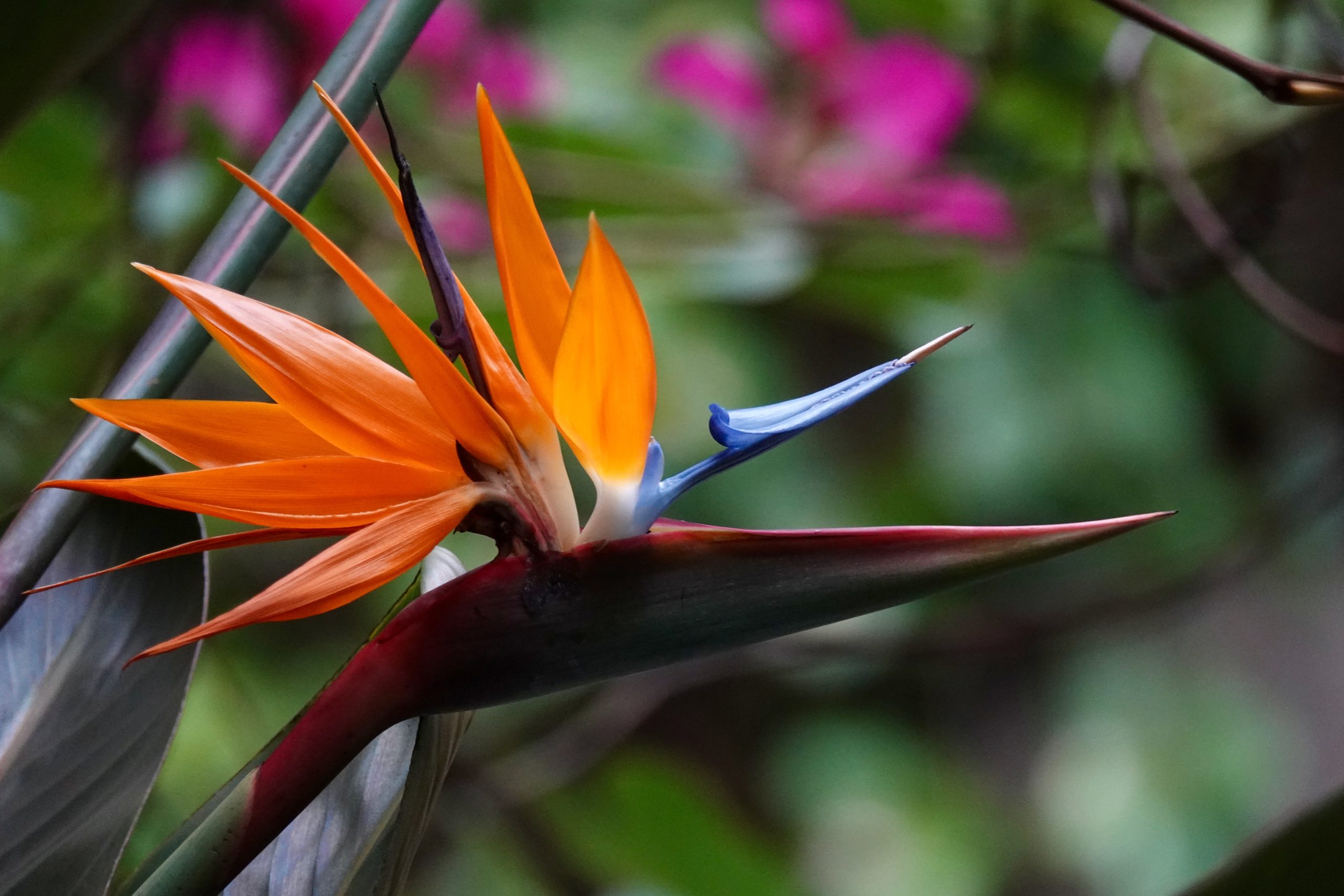This one is probably the most popular African flower among Australia’s gardeners.
This post’s example was photographed on Anzac Day afternoon, in a petite, surprisingly lush parkland, on the “doorstep” of Perth’s CBD.
Today’s musical selection was inspired by an African flower…or, perhaps, by an imaginary one, blooming in a jungle, somewhere…
Perth’s Kings Park is one of the world’s greatest urban parks.
The Harold Boas Gardens are much smaller, utterly different, but beautiful.
Each is just a short, free public transport ride away from the city’s very centre.
Each park is just a pleasant walk away from the other.
Strelitzia is a genus of five very hardy plants, native to Southern Africa.
The featured image shows Strelitzia Reginae, the variety most favoured by gardeners, and widely known as “crane flower” or “bird of paradise”.
You may be surprised to know that Strelitzia belongs to the same order as do many edible plants, including bananas, ginger and cardamon
—
Imagine the most beautiful flower in the world, which no-one has seen.
It grows only for God, in an African jungle.
That, allegedly, was the inspiration source for Duke Ellington’s African Flower, or Petite Fleur Africaine.
At least, reportedly, it is what he told drummer Max Roach and bassist Charles Mingus on 17 September 1962, when their one-off trio made the first recording of African Flower.
Their album Money Jungle was issued the next year.
Ellington was not a finger busting, “virtuoso” pianist.
He was, however, a very rewarding one, most especially when in an improvisatory frame of mind.
Ellington occasionally played African Flower, solo, probably on many more occasions than those recorded.
Sometimes, the result was decorous, sometimes it was much more interesting, rather darker.
I am unsure of the precise when and where (I have seen mutually contradictory claims, each allegedly “authoritative”), but this (1970-ish?) is definitely my favourite version:
Click here to discover more, to see/hear more versions (flutist James Newton’s is warmly recommended), and even to learn how to play African Flower!

[…] and I encountered them, just a few metres away from the “African Flower” which featured in #34 of Pelican Yoga’s “a shining moment” […]